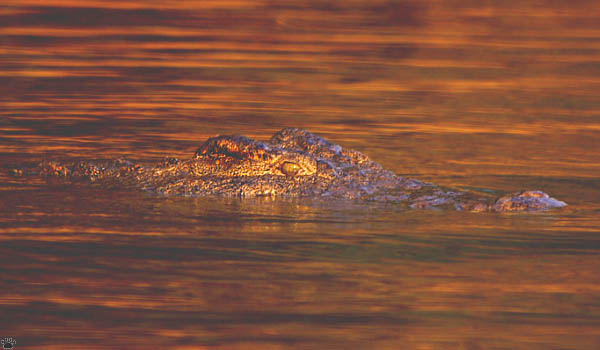
Nile crocodile (Crocodylus niloticus), Lower Zambezi National Park, Zambia.
Crocodiles part 12: Nile Crocodile
In Africa, the most common and widespread species
is the Nile crocodile. It currently occurs from Aswan Reservoir
in Egypt to Zululand in South Africa, and on the western coast of Madagascar.
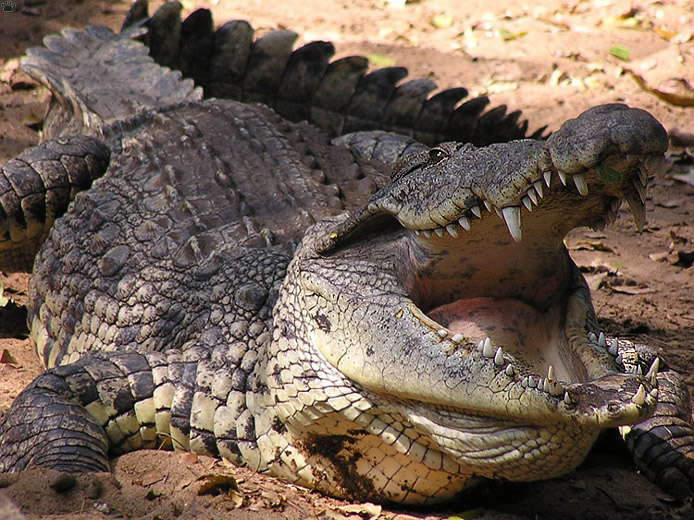
Nile crocodile, Lake Tanganyika, Tanzania. |
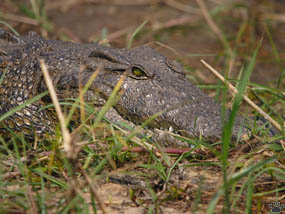
West African Nile crocodile, Lake Oylla, Cameroon. |
It is now extinct in Europe, the Middle East, North Africa and the Comoros, and rare in West and Central Africa and Madagascar. West African populations are probably a separate species. |

Nile crocodile in D'Ankarafantsika National Park, Madagascar. |
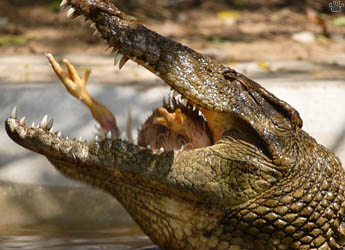 |
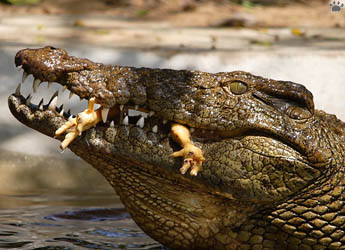 |
| Nile crocodile eating a francolin, iSimangaliso National Park, South Africa. |
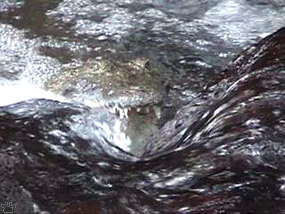
Nile crocodile fishing in
a small waterfall,
Tsavo West National Park, Kenya. |
Nile crocodile is a versatile hunter, known to take prey ranging in size from water striders to black rhinos. Some populations live almost entirely on large mammals,
although usually the main food is fish. |
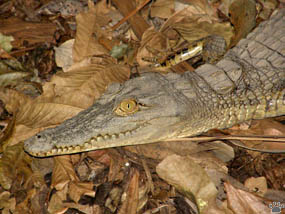
Young Nile crocodile hunting on land at night.
South Luangwa National Park, Zambia. |
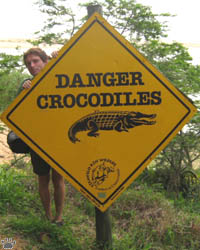 |
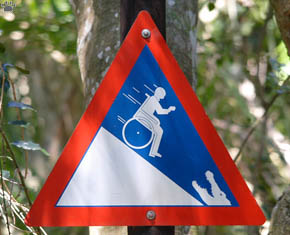
Warning signs, South Africa. |
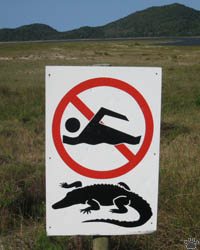 |
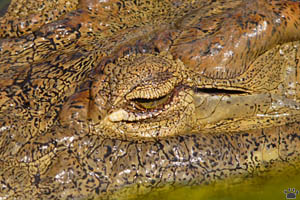
Nile crocodile, Mahango Game Reserve, Namibia. |
This large reptile kills about
200 people per year - more than all other crocodilian species
combined. |

Nile crocodile, Lake Malawi National Park, Malawi. |
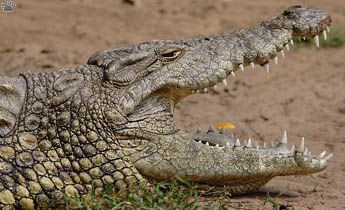 |
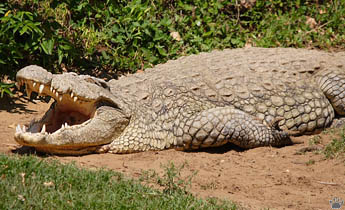 |
| Nile crocodiles, Kruger National Park, South Africa. |
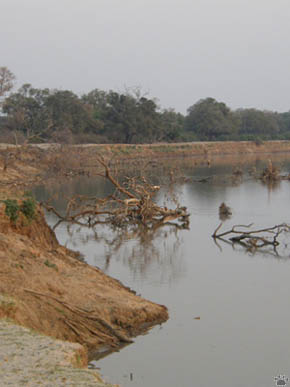
Typical habitat of Nile crocodile in a savanna river, SLNP. |
If not hunted, it can survive in almost any body of water, from brackish coastal lagoons to small mountain streams in Central Sahara. But it is hunted everywhere, except in some national parks of Eastern and Southern Africa, and is usually difficult to approach. |
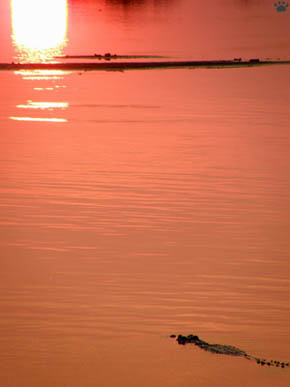
Nile crocodile in Lake Turkana, Ethiopia. |
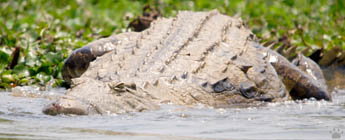 |
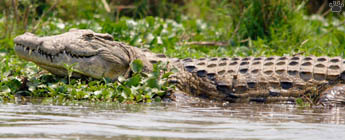 |
| Nile crocodiles living in hot springs in the desert, Awash National Park, Ethiopia. |
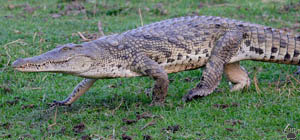
Trotting Nile crocodile, Lilongwe National Park, Malawi. |
Nile crocodiles can run very fast, and even gallop. |
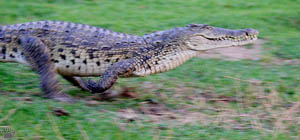
Galloping Nile crocodile, LNP, Malawi. |
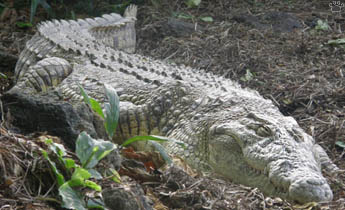 |
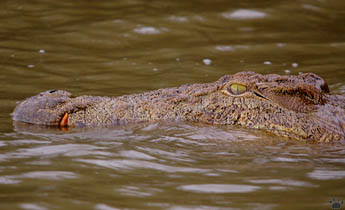 |
| Large Nile crocodiles, Nechisar National Park, Ethiopia. |
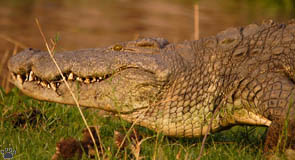
Nile crocodile, LNP, Malawi. |
In Rift Valley Lakes, from Ethiopia to Malawi, they are still very common, and grow up to 6 m/20' in length. |
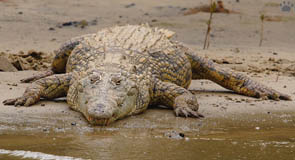
Nile crocodile, Murchison Falls National Park, Uganda. |
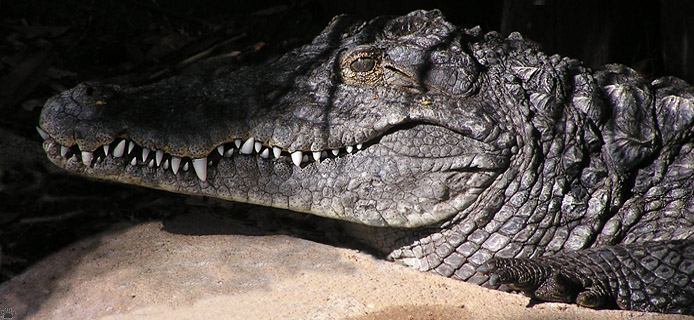
Nile crocodile in a burrow, Buffalo Springs National Park, Kenya. |
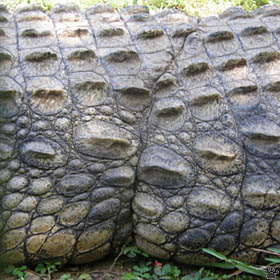
Scar on the side of a Nile crocodile, iSNP, South Africa. |
Nile crocodiles are tough creatures. They can survive serious trauma, fast for many months, tolerate bitter cold and extreme heat. During prolonged droughts, they hide in deep burrows or migrate for many miles overland. |
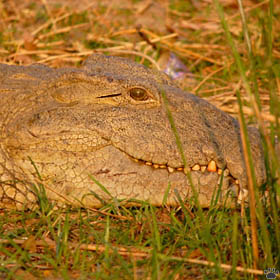
Crocodile walking from a dried-up lake to a river, Maun, Botswana. |
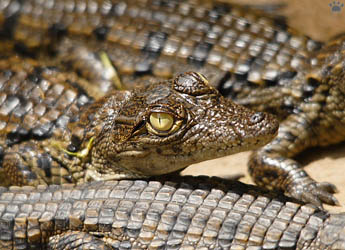 |
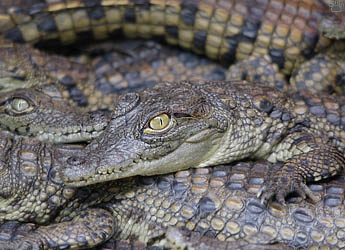 |
| Baby Nile crocodiles, iSNP. |
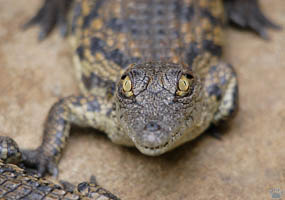
Baby Nile crocodile, iSNP. |
Nests are also located in burrows. Both parents often protect the nest; the mother stays with the hatchlings for up to two years. |

Baby Nile crocodile, iSNP. |
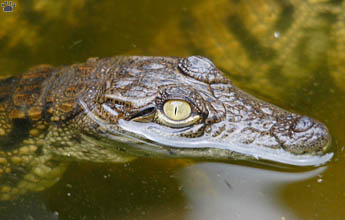
Juvenile Nile crocodile, iSNP.
|
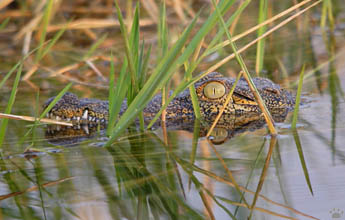
Young Nile crocodile, MGR, Namibia.. |
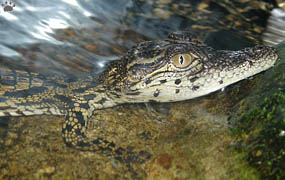
Baby Nile crocodile, Omo Delta, Ethiopia. |
If left without their mother's protection, young crocs move to small streams and ponds to avoid being eaten by adults. |

Baby Nile crocodile, Omo Delta, Ethiopia. |
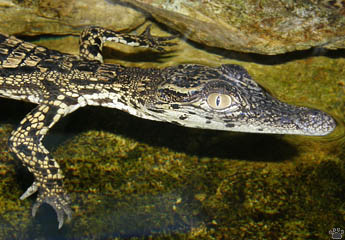 |
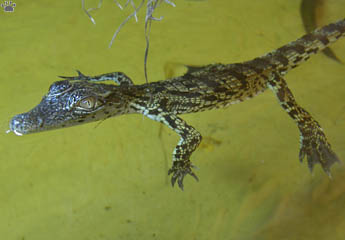 |
| Baby Nile crocodiles, Omo Delta, Ethiopia. |
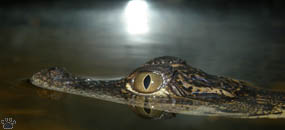
Baby Nile crocodile, Omo Delta, Ethiopia. |
Like all baby crocodiles, they eat mostly insects, then gradually switch to fish. |
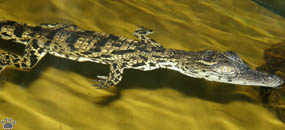
Baby Nile crocodile, Omo Delta, Ethiopia. |
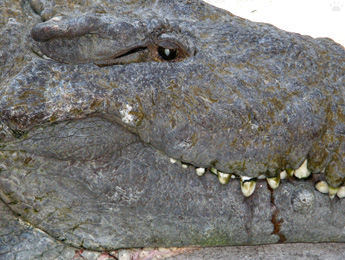
Sacred crocodile (C. suchus), St. Augustin Alligator Farm Zoo Park, Florida.
|
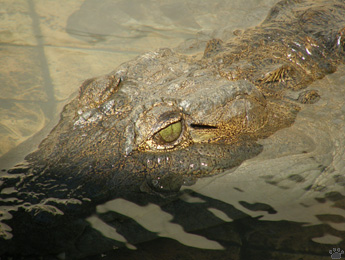
Sacred crocodile, Gatorama, Florida. |
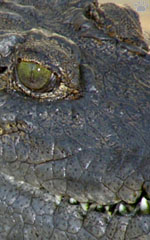
Sacred crocodile (identification
uncertain)
, Lake Ossa area,
Cameroon. |
Recent research has shown that the so-called Nile crocodile is actually two species, similar-looking, but not very closely related. One is the "true" Nile crocodile of East and Southern Africa and Madagascar. The other is a slightly smaller form which the researches call "sacred crocodile". It occurs mostly in West Africa and Sahel. Both species apparently coexist in Central Africa and Nile basin, and used to live together in Egypt. They are even mentioned as two distinct forms in ancient Egyptian texts. The sacred crocodile is a more ancient form, probably ancestral to all American crocodiles and some Asian species. The precise range limits of the two species are not yet know; it is also unknown if they can be reliably told apart in the field. |

"Fierce beast korkadil", relief in
St. George Cathedral (c. 1234),
Yur'ev Polsky, Russia. |

SCUBA-diving crocodile, contemporary wooden figurine, Malawi. |
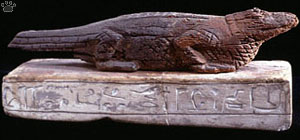
Sacred crocodile of Sobek, Egypt, c. 1400-1200 B.C. Louvres.
|
Even today, crocodile cults still exist in a few places in West Africa. |
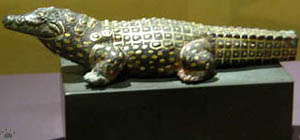
Sacred crocodile of Sobek, Egypt, c. 2000-1900 B.C. Cairo Museum. |
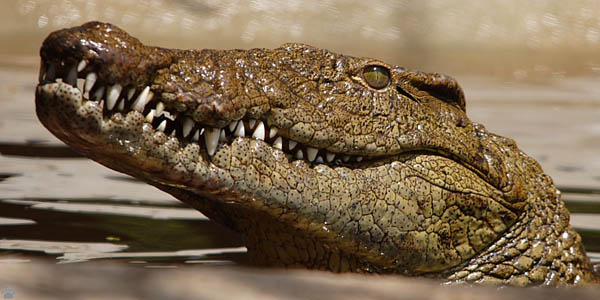
Nile crocodile, iSNP, South Africa. |
Some photos on this page have been co-authored with Alex Bernstein and Sarit Reizin.
Part 13: American crocodile
Back to Part 11
Home
|